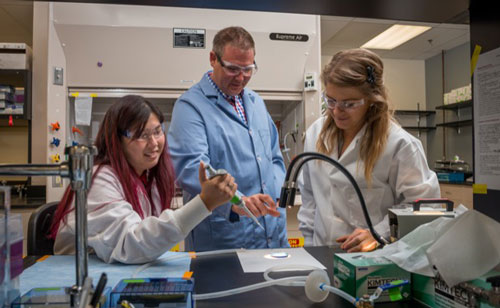| Aug 11, 2015 |
New approach to generating homogeneous cell populations for cell-based assays
|
|
(Nanowerk News) High-throughput cell-based assays are a powerful research tool used to quantify the responses of individual cells or small cell populations under varied conditions. Their applications include drug screening, genomic profiling and environmental impact studies.
|
|
However, since most cell-based assays rely on population-averaged measurements, the ability to tease out important findings and draw accurate conclusions can often be compromised due to cell population heterogeneity.
|
|
“The ability to generate a more homogeneous cell population, at least with respect to a chosen trait, could significantly aid basic biological research and development of high-throughput assays,” says John Slater, assistant professor of biomedical engineering at the University of Delaware.
|
|
Now, Slater and a team of researchers from Duke University, Baylor College of Medicine and Rice University have developed an image-based, cell-derived patterning strategy that produces arrays of homogeneous cells with anatomical properties that mimic the cells from which the patterns were derived.
|
 |
| UD's John Slater (center) is part of a team that has developed an image-based, biomimetic patterning strategy that produces a more homogeneous cell population for high-throughput cellular assays.
|
|
The work is reported in a paper published in ACS Nano ("Recapitulation and Modulation of the Cellular Architecture of a User-Chosen Cell of Interest Using Cell-Derived, Biomimetic Patterning").
|
|
An important feature of the technique is that it could provide a means to decouple the influences of several factors on mechanotransduction-mediated processes, a term that refers to the many mechanisms by which cells convert mechanical stimuli into biochemical activity.
|
|
These factors include cytoskeletal structure, adhesion dynamics and intracellular tension, which combine to govern signaling functions within cells and ultimately cell fate.
|
|
In addition, it could allow for direct recapitulation of the tension state of a user-chosen cell in a large population of patterned cells.
|
|
“The ability to fine-tune cytoskeletal architecture, adhesion site dynamics, and the distribution of intracellular forces through simple ‘on-the-fly’ pattern modifications provides an unprecedented level of control over cytoskeletal mechanics,” Slater says.
|
|
He sees the new tool as potentially synergistic with an existing technique known as FACS (fluorescence-activated cell sorting), which is often employed prior to experimentation to minimize the problem of heterogeneity.
|
|
Slater explains that with FACS, homogenous cell populations are generated based on the presence of specific cell surface markers.
|
|
In contrast, with the new technique, a cell of interest can be chosen based on simple image analysis of protein expression, and a pattern configuration can be derived to produce a phenotype similar to the cell of interest in a large population of patterned cells.
|
|
This could drive a chosen cell phenotype through mechanotransduction and also help maintain phenotypes that have already been selected for via FACS.
|
|
“Such a tool could prove extremely useful in investigating the influence of subtle local environmental changes on cell behavior, for example, stem cell differentiation, particularly when moving to high-throughput assay platforms and single-cell analyses,” Slater says.
|

